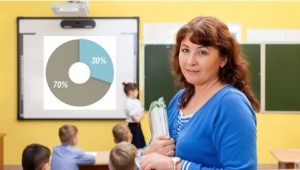The Missouri Schoolwide Positive Behavior Support (SW-PBS) Effective Teaching and Learning Practices have been shown to decrease problem behavior and increase academic learning time.
 Classroom Expectations & Rules
Classroom Expectations & Rules- Classroom Procedures & Routines
- Encouraging Expected Behavior
- Discouraging Unexpected Behavior
- Active Supervision
- Opportunities to Respond
- Activity Sequencing & Choice
- Adjusting Task Difficulty
Effective classroom managers are known not only by what they do when misbehavior occurs, but by what they do to set their classrooms up for academic success and to prevent problems from occurring. Academic learning time, or the amount of time that students are actively and productively engaged in learning, is a strong determinant of achievement. However, research continues to demonstrate that in many classrooms, as much as half of the school day can be lost to discipline and other non-instructional activities.
 Though it can be as high as 50%, on average, discipline and other non-instructional activities such as taking attendance, announcements, etc., typically account for 30% of the school day. Therefore, it is essential that our SW-PBS efforts extend the positive, proactive, and instructional approaches developed and used schoolwide and in non-classroom settings into classroom practices.
Though it can be as high as 50%, on average, discipline and other non-instructional activities such as taking attendance, announcements, etc., typically account for 30% of the school day. Therefore, it is essential that our SW-PBS efforts extend the positive, proactive, and instructional approaches developed and used schoolwide and in non-classroom settings into classroom practices.
 MO SW-PBS has identified eight Effective Teaching and Learning Practices that have been shown to increase the likelihood of expected behavior and decrease unexpected behavior, resulting in an increase in academic learning time.
MO SW-PBS has identified eight Effective Teaching and Learning Practices that have been shown to increase the likelihood of expected behavior and decrease unexpected behavior, resulting in an increase in academic learning time.

